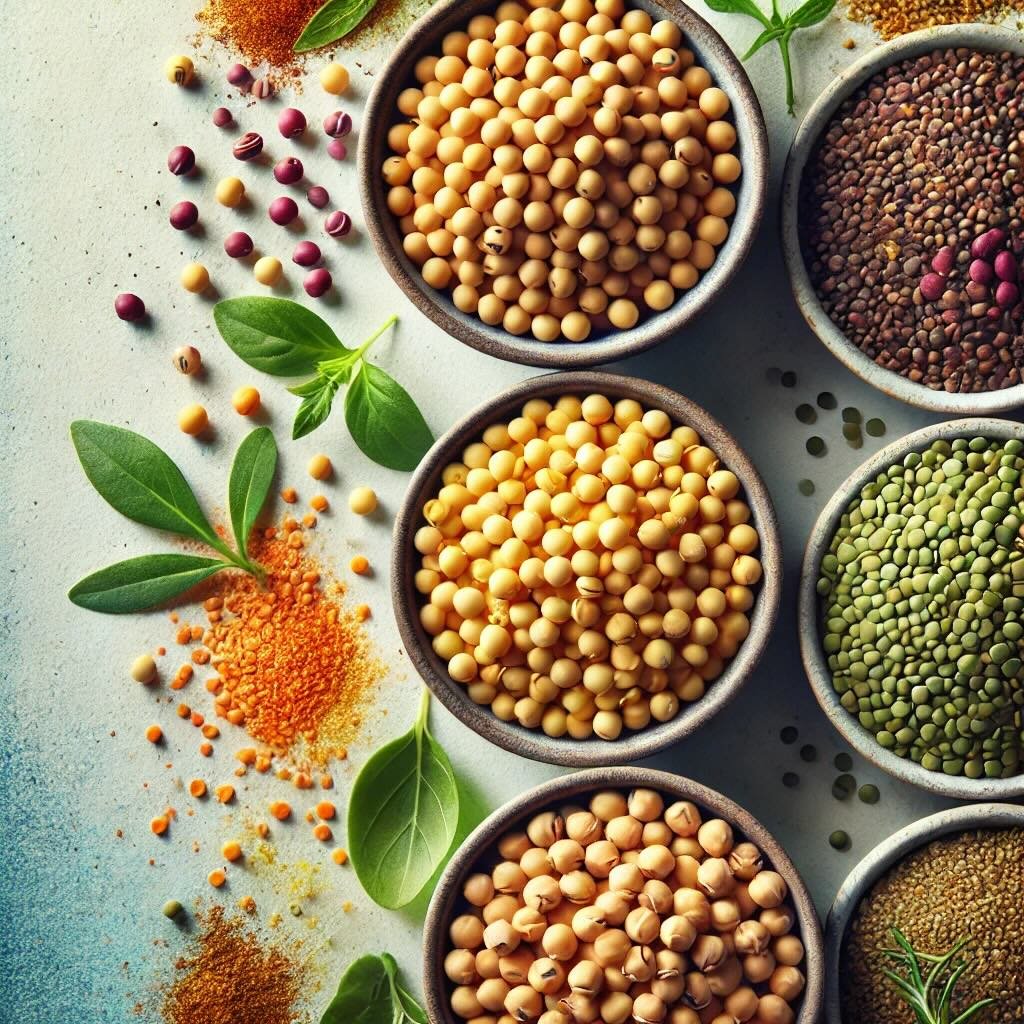Tofu vs. Other Plant Proteins: The Ultimate Showdown
Choosing a meat-free protein is easier than ever, thanks to the growing range of plant-based options. But with so many to choose from—such as tofu, tempeh, seitan, lentils, and chickpeas—how do you decide which one suits your lifestyle and nutritional needs? In this post, we’ll dive into each protein source’s strengths and weaknesses, from flavour and texture to cooking convenience and gluten concerns. By the end, you’ll know exactly which plant-based protein to reach for, whatever dish you’re planning.
1. Tofu: The Classic All-Rounder
Nutritional Snapshot
Protein: Approximately 8–10g per 100g serving (firm tofu).
Key Nutrients: Calcium (especially if calcium-set), iron, and isoflavones.
2. Pros & Cons
Pros: Mild flavour that absorbs marinades effortlessly, suitable for both savoury and sweet dishes.
Cons: Texture can be too soft for some, and pressing is required to remove excess water.
3. Texture & Flavor
Tofu’s subtle taste acts as a blank canvas, making it ultra-versatile. Silken tofu is ideal for creamy sauces or desserts, while firm tofu excels in stir-fries or bakes.4. Popular Uses
Stir-fries, smoothies, scrambles, and desserts. Tofu can morph into virtually any texture or flavour profile you need.
2. Tempeh: Fermentation for Depth and Bite
Nutritional Snapshot
Protein: Around 19g per 100g serving.
Key Nutrients: High in fibre, beneficial probiotics from fermentation.
2. Pros & Cons
Pros: Dense, nutty flavour; firm texture; may improve digestion due to fermentation.
Cons: Bold flavour can be off-putting for beginners; it can be pricier depending on your location.
3. Texture & Flavor
Tempeh features an earthy, chunky bite. It’s typically made by fermenting whole soybeans, though some tempeh products include other grains.4. Gluten Note
Naturally, tempeh is often gluten-free if made solely from soybeans or gluten-free grains (e.g., rice or millet). However, certain tempeh brands do mix in wheat-based ingredients. Always check labels for “gluten-free” certification if you have celiac disease or gluten sensitivity.5. Popular Uses
Bacon-style strips, marinated for “steaks,” crumbled into stir-fries or chilis.
3. Seitan: Wheat-Based Protein Marvel
Nutritional Snapshot
Protein: Over 25g per 100g serving (depending on the brand).
Key Nutrients: Very high in protein, though it lacks certain amino acids found in soy; low in fat.
2. Pros & Cons
Pros: Chewy, meat-like texture ideal for replicating chicken or beef.
Cons: Contains wheat gluten, so not suitable for those avoiding gluten.
3. Flavor & Texture
Sometimes referred to as “wheat meat,” seitan soaks up seasonings effectively but can be bland if not well-marinated. The dense, chewy consistency is perfect for hearty dishes.4. Popular Uses
Vegan “wings,” sandwiches, sliced deli-style “meats,” or chunked in stew recipes.
4. Lentils: The Budget-Friendly Pantry Staple
Nutritional Snapshot
Protein: Approximately 9g per 100g cooked lentils.
Key Nutrients: Iron, folate, and fibre galore.
2. Pros & Cons
Pros: Affordable, widely available, easy to store (especially dried), high in fibre.
Cons: Earthy flavour might need extra spices; requires cooking unless you buy canned.
3. Texture & Flavor
Lentils range from firm green/brown types that hold shape to red lentils that cook down into a creamy texture—ideal for soups.4. Popular Uses
Soups, stews, curries, salads, veggie burgers, or even lentil “meatballs.”5. Gluten-Free Note
Lentils are naturally gluten-free, making them a staple for many who avoid gluten.
5. Chickpeas: Creamy and Versatile
Nutritional Snapshot
Protein: About 9g per 100g cooked chickpeas.
Key Nutrients: High in fibre, folate, magnesium, and iron.
2. Pros & Cons
Pros: Adaptable flavour; works in both crunchy snacks and creamy dips.
Cons: Longer cooking times if using dried chickpeas; mild taste needs additional seasoning.
3. Texture & Flavor
Creamy when mashed, pleasantly firm when roasted. Chickpeas can go from a classic hummus to roasted crunchy bites.4. Popular Uses
Hummus, falafels, roasted snacks, curries, or chickpea “tuna” salad.5. Gluten-Free Note
Chickpeas are naturally gluten-free, making them a safe choice for those with gluten sensitivity or celiac disease.
6. Key Comparisons and Choosing Your Perfect Protein
Protein Content
Highest: Seitan typically wins in pure protein count, followed by tempeh.
Moderate: Tofu, chickpeas, and lentils provide balanced protein along with fibre and micronutrients.
2. Texture & Taste
Mild & Adaptable: Tofu, chickpeas
Bold & Chewy: Tempeh, seitan
Earthy & Homey: Lentils
3. Cooking Convenience
Easiest: Tofu (especially if you buy it pre-pressed) and canned chickpeas
Requires Some Prep: Lentils (if dried), tempeh (pre-cook or marinate), seitan (if you plan to make it from scratch)
4. Gluten-Free Considerations
Naturally Gluten-Free: Tofu, lentils, and chickpeas
Tempeh: Usually gluten-free, but some brands incorporate wheat. Read labels carefully if you’re sensitive to gluten.
Seitan: Made from wheat gluten, so it’s completely off the table for anyone avoiding gluten.
5. Dietary Needs
Soy-Free: Seitan, lentils, chickpeas
Low-Fat: Seitan, tofu (depending on firmness)
Conclusion
No single plant-based protein fits everyone’s needs perfectly. Tofu’s adaptability makes it a go-to for many dishes, while tempeh’s unique fermented flavour can be a culinary game-changer. Seitan’s dense chewiness replicates a meaty texture, but it’s out for the gluten-free crowd—who may prefer lentils or chickpeas. Each of these proteins brings something unique to the table, so why not try them all? Experimenting is half the fun, and it ensures you’ll never get bored on your plant-based journey.

